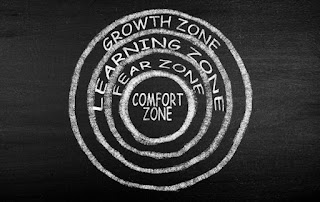The Long Game: How to Turn Short-Term Resolutions into Lifelong Habits
Achieving Life-Changing Goals: Transforming Short-Term Resolutions into Lifelong Habits
As the New Year approaches, many of us set resolutions with the hope of making meaningful changes in our lives. However, studies show that only about 8% of individuals successfully maintain their resolutions beyond a few months. The key to lasting transformation lies in turning these short-term goals into sustainable habits that endure throughout the year and beyond. By incorporating practices like yoga and meditation, and focusing on incremental, manageable changes, we can create a foundation for lifelong well-being.
The Psychology of Habit Formation
Understanding Habit Formation
Habits are formed through a process called “automaticity,” where repeated behaviors become automatic. The brain creates and strengthens neural pathways, making the behavior easier over time. This concept is rooted in the habit loop, as described by Charles Duhigg in The Power of Habit, which involves a cue, routine, and reward. Understanding and leveraging this loop is essential for developing lasting habits.
The cue triggers the behavior, the routine is the action, and the reward reinforces the loop. For instance, if your goal is a daily yoga practice, the cue might be waking up in the morning, the routine could be a 20-minute yoga session, and the reward could be a sense of calm or enjoying a post-yoga cup of tea. Consistent repetition solidifies the loop.
The Importance of Patience and Consistency
Research from the European Journal of Social Psychology indicates that habit formation takes an average of 66 days but can range from 18 to 254 days, depending on the complexity of the behavior and the individual. This wide range highlights the need for patience and consistency. Habits do not form overnight, but the cumulative effect of small, consistent actions can lead to monumental changes over time.
The Power of Small Wins
Celebrating minor achievements along the way keeps you motivated. When you recognize small successes, you activate the brain’s reward system, releasing dopamine and encouraging further progress. This principle of building on small wins can be seen in successful habit formation strategies across various fields, from sports to business.
Setting SMART Goals
Why SMART Goals Matter
SMART goals—Specific, Measurable, Achievable, Relevant, and Time-bound—provide clarity and structure, making it easier to track progress and sustain motivation. This framework is widely used by high achievers because it turns vague aspirations into actionable plans.
How to Set SMART Goals for Yoga and Meditation
- Specific: Clearly define the goal. Instead of saying, “I want to exercise more,” specify, “I will practice yoga for 20 minutes every morning to improve my flexibility and reduce stress.”
- Measurable: Establish criteria for tracking progress. Use a habit-tracking app to log your sessions and observe patterns over time.
- Achievable: Make sure the goal is realistic. For beginners, starting with 5-10 minute sessions is a manageable way to build consistency.
- Relevant: Align your goals with broader life aspirations. If your focus is on reducing anxiety, a meditation practice that emphasizes breathwork and mindfulness is highly relevant.
- Time-bound: Set a deadline to create urgency. For example, “By March 1st, I will establish a daily meditation habit.”
Research from the Journal of Consulting and Clinical Psychology demonstrates that individuals who use SMART goals are significantly more likely to achieve their objectives than those who set general intentions. This approach provides a roadmap that can be adjusted as needed, ensuring you remain on course.
The Role of Yoga and Meditation in Habit Formation
Yoga and meditation do more than improve physical fitness and mental clarity; they act as foundations for other healthy habits by promoting mindfulness and emotional regulation.
Yoga: Building Physical and Mental Resilience
Yoga has been shown to regulate the autonomic nervous system and reduce cortisol levels, which in turn decreases stress and enhances overall resilience. Harvard Medical School research suggests that practicing yoga regularly can improve emotional regulation and foster a greater sense of well-being.
- Begin with Basic Sequences: Start with simple, foundational poses like Child’s Pose, Cat-Cow, and Mountain Pose. A 10-minute practice can be a stepping stone for longer, more challenging routines.
- Progress Gradually: As your practice evolves, include more dynamic flows like Sun Salutations and balancing poses like Tree Pose. The key is to increase the complexity of your practice as your body and mind become more resilient.
- Acknowledge Your Progress: Reflect on milestones, whether it’s achieving a new pose or practicing consistently for a month. Positive reinforcement solidifies the habit and keeps you motivated.
Meditation: Cultivating Mindfulness and Focus
Meditation is a proven method for reducing stress and enhancing self-awareness. Studies from Johns Hopkins University show that regular meditation can be as effective as medication for alleviating symptoms of anxiety and depression.
- Start Small: A five-minute breath awareness meditation is a simple entry point. Focusing on each inhale and exhale helps center your mind and reduces anxiety.
- Practice Mindfulness in Daily Tasks: Incorporate mindfulness into everyday activities, such as eating or walking. This habit of presence can improve your overall awareness and well-being.
- Explore Different Techniques: Experiment with body scans, loving-kindness meditations, or visualization practices to keep your routine engaging and tailored to your needs.
Visualization meditation, in particular, can be powerful. Imagine your long-term goals vividly and feel the emotions associated with success. This technique strengthens your commitment and makes your goals feel more tangible.
Incorporating Movement into Daily Life
Adding more movement into your daily routine doesn’t mean setting aside hours for exercise. Even small, frequent bursts of physical activity can make a significant difference in your health and well-being.
Start with Small Steps
Research from the American Journal of Physiology has shown that short, frequent bouts of exercise, termed “movement snacks,” are effective for boosting cardiovascular health and energy levels. These could include a brisk walk around the office or simple stretches throughout the day.
Practical Ideas:
- Use the Pomodoro Technique: Work for 25 minutes, then take a 5-minute break to do some light physical activity.
- Incorporate stretches into your routine, like neck rolls or seated spinal twists, to counteract the effects of sitting.
Leverage Technology for Motivation
Fitness apps and wearable devices like Fitbit or Apple Watch can help track your activity levels, set daily movement goals, and provide reminders. These tools offer an added layer of accountability and motivation, which is often crucial in building consistent habits.
Enhancing Social Connections
Strong social connections are fundamental to emotional well-being and can greatly support your habit-forming journey. Research underscores that people are more likely to sustain habits when they feel connected to and supported by a community.
The Power of Community
Participating in group activities like yoga classes or meditation workshops can boost motivation. According to the British Journal of Sports Medicine, people who engage in group fitness activities report higher satisfaction and adherence compared to those who exercise alone.
Ideas for Connection:
- Join a local or virtual yoga class to practice with others and gain a sense of community.
- Attend meditation retreats or workshops to deepen your practice and learn from experienced teachers.
Prioritize Quality Social Time
Regular interactions with friends and family help create a support network that can make it easier to stick to your goals. Research shows that shared experiences strengthen relationships and promote a sense of belonging.
Volunteering: Engaging in community service can release oxytocin, a hormone that promotes bonding and reduces stress. The act of helping others not only benefits the community but also enhances your emotional well-being.
Building Healthy Eating Habits
Nutrition plays a pivotal role in overall health, energy levels, and even mood. Developing mindful eating habits and planning meals intentionally can transform your diet in sustainable ways.
Practice Mindful Eating
Mindful eating emphasizes being present during meals, savoring each bite, and paying attention to hunger and fullness cues. Research from the Journal of Obesity shows that mindful eating can prevent overeating and lead to more balanced food choices.
Mindful Eating Practices:
- Chew each bite thoroughly and put down your fork between bites.
- Eliminate distractions, like watching TV, to focus entirely on your meal.
Plan and Prepare Meals
Planning and preparing meals in advance can significantly improve dietary habits and make healthy eating more manageable. By dedicating time each week to meal prep, you can reduce the stress of deciding what to eat at the last minute and ensure you have nutritious options readily available. Start by creating a meal plan that outlines your meals for the week, including breakfast, lunch, dinner, and snacks. Make a detailed shopping list based on your plan, which helps streamline grocery trips and prevents impulse buying.
How to Get Started:
- Batch Cook: Prepare larger portions of meals like soups, grain bowls, or roasted vegetables, and store them in portioned containers. This makes it easy to grab a balanced meal when you’re short on time.
- Pre-Cut Ingredients: Chop vegetables or marinate proteins ahead of time, so they’re ready to cook when needed. This saves time on busy days and encourages you to stick to healthy meals.
- Use Storage Strategies: Store meals in airtight containers and label them with the date to keep track of freshness. Freezing meals is a great way to have healthy options ready to go, especially for those days when cooking feels overwhelming.
By implementing a meal-prepping routine, you can make healthy eating more consistent and reduce the likelihood of resorting to less nutritious, convenience foods.
Focus on Whole Foods
Whole, unprocessed foods provide essential vitamins, minerals, and nutrients that keep you energized. Gradually replacing processed foods with healthier options can have a profound impact on your well-being.
Tips for Gradual Change:
- Incorporate leafy greens into your meals.
- Choose whole-grain options instead of refined carbohydrates.
The Power of Journaling
Journaling is an invaluable tool for tracking your progress, reflecting on your journey, and reinforcing positive changes. It provides a space to celebrate successes, process setbacks, and set new intentions. Journaling can also be an effective way to measure progress of your goals as we mentioned earlier with setting smart goals.
Journaling Prompts for Reflection and Growth
- Reflect on Successes: “Which habits have become part of your daily life, and how have they made a difference?”
- Plan for the Future: “What goals do you want to continue developing or adjust in the coming year?”
- Identify Growth Areas: “What obstacles did you encounter, and what strategies worked best to overcome them?”
Tips for Effective Journaling:
- Schedule a specific time for journaling, whether in the morning or evening, to make it a regular part of your routine.
- Use habit-tracking charts to monitor your progress visually. Or date each journal entry.
- Write freely without self-judgment, focusing on both accomplishments and areas for improvement.











